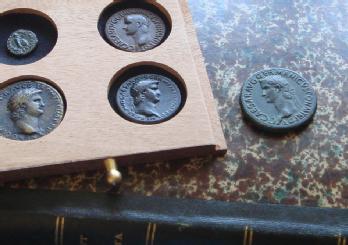Numismatics at Warwick
Numismatics is the study of coins and coinage, and objects that look like coins but may not have had an economic function: medals, tokens, coin-weights – even religious amulets, pilgrim’s badges or fake coins made to deceive collectors. At Warwick we specialise in Greek and Roman coinage from their origins up to the seventh century AD. This encompasses the first coins, made in Asia Minor round about 600 BC through Classical, Hellenistic and Roman issues to the early phase of Byzantine coinage.
Greek and Roman coins have long been appreciated for their ability to evoke the past. Renaissance collectors appreciated them for their vivid portraits of famous persons from history; nowadays historians and archaeologists use them as evidence for social, political, and economic conditions in ancient societies. Unlike most literary historical sources that were usually composed by private individuals many years after the events they describe, coins are contemporary official documents issued by state authorities. In a number of instances they are the only remaining documents of cities and rulers of Classical antiquity. But while the coins themselves are historical facts, their designs do not necessarily relate historical truths. Part of the fascination of ancient coinage concerns the interpretation of its designs and inscriptions.

